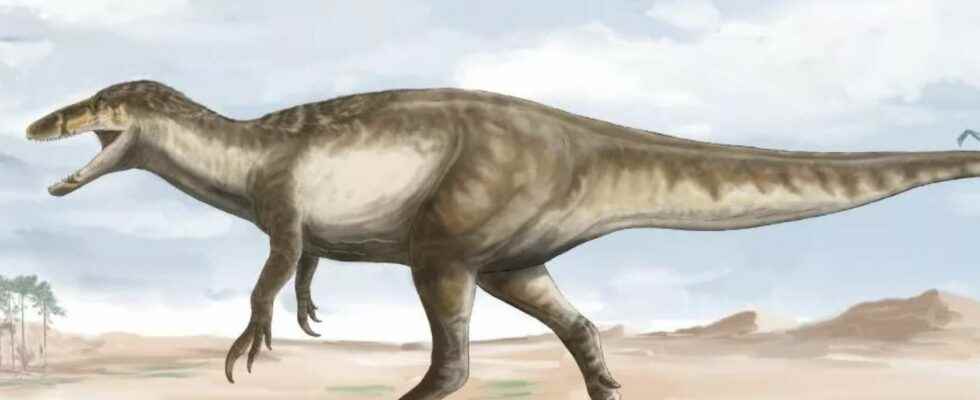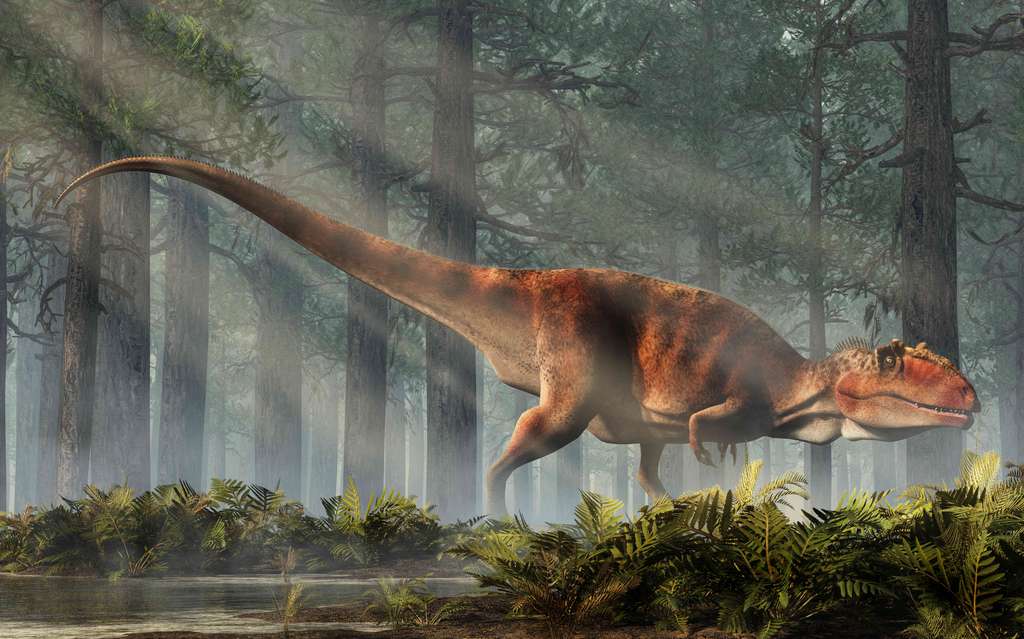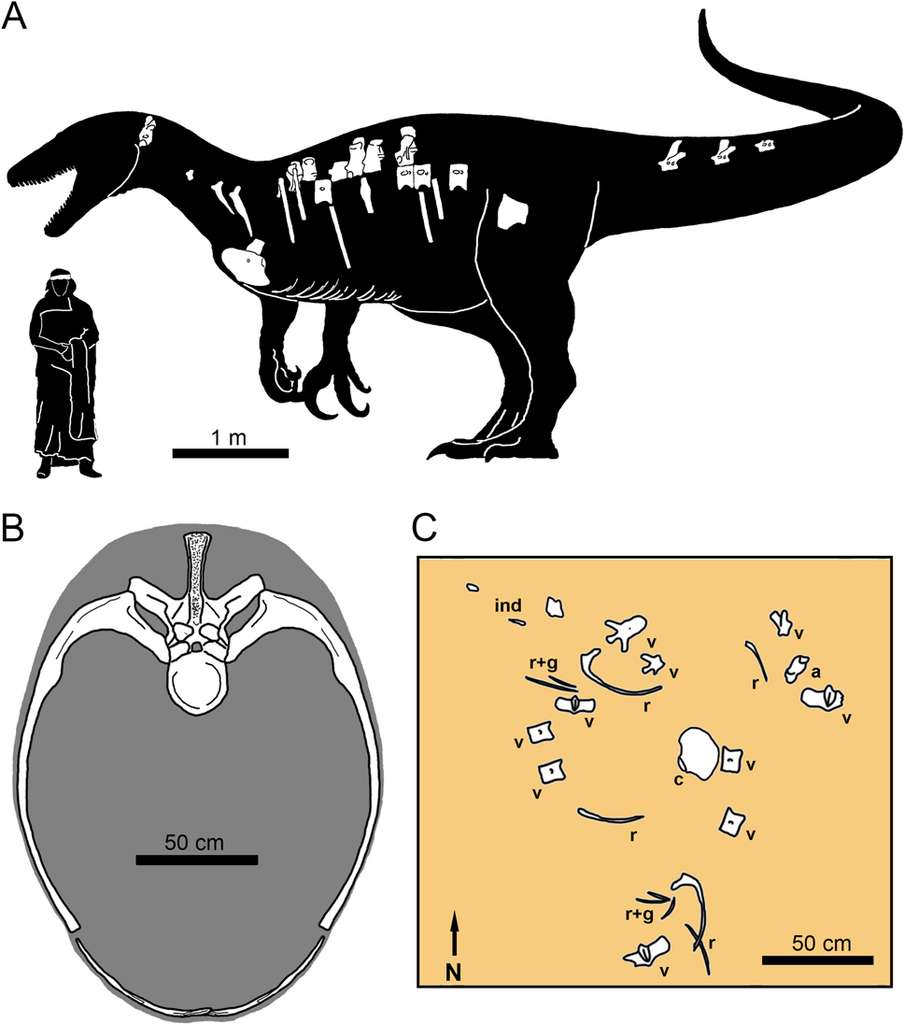If the Velociraptor were already giving cold sweats to the spectators of the saga Jurassic Parkthe films are far from showing which were the most impressive ” raptors » having walked the earth. A study reports the discovery of a new species in Argentina, whose size rivaled that of allosaurs.
You will also be interested
[EN VIDÉO] Interview: where to find dinosaur fossils? Disappeared 65 million years ago, the dinosaurs nevertheless left some traces in fossil form. But what are the most favorable geological conditions for their conservation and where can they be found? Futura-Sciences asked the question to Éric Buffetaut, paleontologist, during this interview.
Theropods are one of the groups of dinosaurs the best known to the general public because they include the largest species of carnivores that have ever walked the Earth, including the emblematic tyrannosaurus rex, Spinosaurus aegyptiacus as well as species of the genus Allosaurus. Several theropods were made famous thanks to the films of the saga Jurassic Park and Jurassic World. In the next film of this saga titled Jurassic World: The World Afterit’s the turn of Giganotosaurusa theropod belonging to the group of carcharodontosaurids, to cause panic among humans.
This giant predator lived in South America and its disappearance along with that of other carcharodontosaurids may have allowed other groups of theropods to flourish. Among these groups is that of the megaraptora, within which a new species giantess of “ raptor » has just been described.
” The shadow of death “
A research team publishes in the newspaper Scientific Reports information about this new species named Maip macrothorax. This species belongs to the group of megaraptora, which is part of that of allosauroids. The specimen was discovered in the province of Santa Cruz, Argentina, and dates from the Maastrichtian (-72.1 to -66 million years). The term macrothorax reminds that this “ raptor » had a big chest cavity which was just over 1.20 meters wide. The paleontologists found only rare fossils of this specimen such as vertebrae, ribs and part of the pectoral girdle but they were able to estimate that the individual was around nine and a half meters long and almost three meters high.
The authors of the study were also interested in the phylogeny Megaraptors. They determined that M. macrothorax was phylogenetically close to other South American megaraptora which are more recent than those from Australia and Asia. The latter were also smaller and of less robust constitution than the subgroup of which the impressive M. macrothorax. The latter must therefore have been among the greatest predators of its time in South America. The genus name Maip is also the name of an evil entity from the mythology of the Tehuelches (Indians of Patagonia) which means ” the shadow of death ».
The Dilophosaurus or Dilophosaurus, present in the film Jurassic Park You would never have liked to come across a dinosaur of the genus Dilophosaurus, or Dilophosaurus. You would have seen this “two-crested lizard” in China or Arizona (USA) during the early Jurassic, between 205 and 185 million years before our era. You may have already seen it in Steven Spielberg’s film Jurassic Park (1993). There it wears a retractile membrane on its neck similar to that of the frilled lizard and can send out blinding venom. It is very likely that he would have killed you with the claws he had on his front and back paws. You wouldn’t really appreciate it! © Courtesy of Jon Hughes, www.pixel-shack.com
Spinosaurus, or Spinosaurus, a sizeable dinosaur You would never have liked to come across a spinosaurus, or Spinosaurus. Its conical teeth could devour fish but also young dinosaurs (a man can easily make you think of a young prey, don’t doubt it). A muzzle found made it possible to estimate its size: between 16 and 18 meters for a weight of 11 tons! This would make it the largest known carnivorous dinosaur and the largest land predator. Ouch! © Courtesy of Jon Hughes, www.pixel-shack.com
The tarbosaurus, or Tarbosaurus, at the top of the food chain You would never have liked to come across a tarbosaurus, or Tarbosaurus, and its ton of fresh flesh ready to devour you. It was at the top of the food chain and fed on large dinosaurs. You would have loved its lower jaw with its unique locking mechanism and its dozens of sharp teeth… but you certainly wouldn’t have had time to count them! © Courtesy of Jon Hughes and Russell Gooday, www.pixel-shack.com
The Deinonychus, a small dinosaur with terrifying claws You would never have liked to come across a Deinonychus. Its name means “terrifying claw”, which sends shivers down your spine. His second toe was equipped with a giant, sickle-shaped claw. It is believed to have been retracted as he walked. It was however small, at most 3 m long and about 1.70 m high. You would have had time to think about it while it grabbed you! © Courtesy of Jon Hughes, www.pixel-shack.com
The Carnotaurus, or Carnotaurus You would never have liked to come across a carnotaurus, or Carnotaurus, because its name means “carnivorous bull”. Something to be very scared of already. Although considered medium-sized, this dinosaur was still 7.5 to 9 meters long and twice your size in height. Its 1,000 to 1,600 kilos would have thrown itself on you. Indeed, he did not have arms long enough to catch you. You would therefore have died in horrible suffering. © Courtesy of Jon Hughes, www.pixel-shack.com
Abelisaurus, or Abelisaurus, a bipedal carnivore You would never have liked to come across an abelisaur, or Abelisaurus. This bipedal carnivore had rigid ridges on the top of the skull. Only one skull of this specimen has been found, which has established that it was 7 to 9 meters long. The skull in question was still 85 centimeters long, enough to stand up to us! © Courtesy of Jon Hughes, www.pixel-shack.com
The giganotosaurus, or Giganotosaurus, one of the largest terrestrial carnivores You would never have liked to come across a giganotosaurus, or Giganotosaurus because it is one of the largest known terrestrial carnivores. The largest found would measure 14 meters and weigh 8 tons. We could now use his skull as a bathtub: he measured 1.95 meters. As for his teeth, they were real daggers of 20 centimeters! Run for your life ! © Courtesy of Jon Hughes, www.pixel-shack.com
Acrocanthosaurus, or Acrocanthosaurus, one of the largest theropods You would never have liked to come across Acrocanthosaurus, or Acrocanthosaurus, because it is one of the largest theropods to ever exist. The largest specimen found measured 11.5 meters from the tip of the nose to the tip of the tail. You wouldn’t have appreciated its 6 or 7 tons either. His head alone was almost the size of a reclining man. © Courtesy of Jon Hughes, www.pixel-shack.com
The velociraptor and its retractable claw You would never have liked to come across a velociraptor because it could have devoured you thanks to its powerful jaw bearing around 80 sharp teeth. It was about 1.5 meters in length and 0.5 meters in height. He weighed around 15 kilograms. He would also have been able to stab you thanks to his retractable claw which can be positioned almost vertically. Run! © Courtesy of Jon Hughes, www.pixel-shack.com
Allosaurus, or Allosaurus, a fearsome predator You would never have liked to cross paths with an allosaurus, or Allosaurus, because this bipedal predator would have blithely torn you apart with its long arms equipped with three forked fingers. Note that he could have done otherwise by devouring you with his sharp teeth. What would you have preferred? © Courtesy of Jon Hughes, www.pixel-shack.com
Interested in what you just read?


